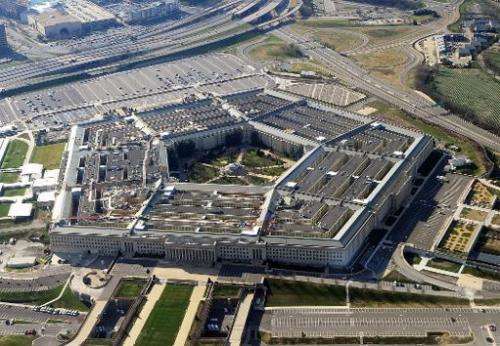US military ready to share some airwaves with industry

The Pentagon said on Thursday it would take steps to share some airwaves in coming years to accommodate the wireless industry, which is clamoring for more bandwidth.
Unveiling a strategy for the military's use of spectrum, officials said the approach is designed to balance the needs of commercial firms while also providing for the Pentagon's growing appetite for spectrum.
But defense officials offered no specific numbers or time table about how much bandwidth it would be willing to share or "vacate."
The Pentagon's blueprint follows a 2010 decision from President Barack Obama that calls for a total of 500 MHz of spectrum to be unlocked by 2020.
From tablets carried by combat troops to drone aircraft and sophisticated fighter jets, the American military is increasingly dependent on secure access to radio airwaves.
But the wireless industry is pressing the federal government to open up more "real estate" on the spectrum, arguing additional bandwidth is crucial to ensure growth in a vital economic sector.
The Defense Department has faced criticism that it has been reluctant to relinquish exclusive access to valuable airwaves that remain off limits to industry.
About 18 percent of the most highly coveted portion of spectrum, between 300 MHz and 3 GHz, is currently reserved solely for the federal government, including the military.
The Federal Communications Commission in January announced plans for a series of auctions for newly available frequencies.
Over the past decade, the Pentagon has already unlocked some frequencies, either withdrawing from the airwaves or sharing access with industry.
"It's a balance, obviously, between the commercial needs and the needs of national security," said Major General Robert Wheeler, who helped present the strategy document at a briefing Thursday.
So far, the Pentagon had struck the right balance, he said, and new "spectrum-sharing" technology could help resolve some of the competing demand.
Although Wheeler and other officials did not rule out giving up some frequencies, they stressed that the military would focus on more efficient technology or methods that would allow it to share the same airwaves with industry without producing interference.
"I think that what we've found is the best plan for the future ...(combines) vacating, sharing, and compression," Wheeler said. "And that's how we're going forward with it."
Teri Takai, the Pentagon's chief information officer, said industry and government needed to collaborate to "identify ways to make spectrum more available for commercial use."
But, striking a cautious tone, she said carrying out the new strategy would take "years" and that the military could only adapt over the long-term, as it had to modify older equipment and design new weapons with spectrum use in mind.
"We cannot shift in a short time frame.
"We just have too much equipment and too much capability that really has to be transitioned in a very thoughtful way so as not to impose a major burden on budgets and a major burden on the taxpayers."
© 2014 AFP


















